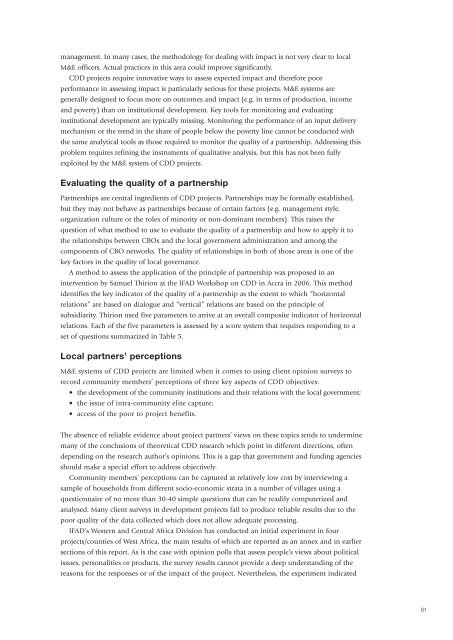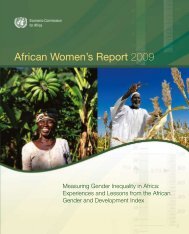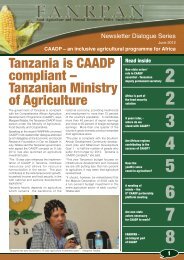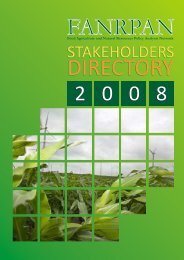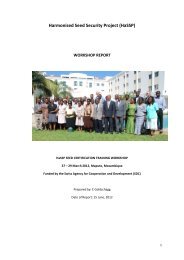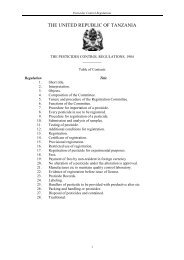Community-driven development decision tools for rural - IFAD
Community-driven development decision tools for rural - IFAD
Community-driven development decision tools for rural - IFAD
- No tags were found...
Create successful ePaper yourself
Turn your PDF publications into a flip-book with our unique Google optimized e-Paper software.
management. In many cases, the methodology <strong>for</strong> dealing with impact is not very clear to localM&E officers. Actual practices in this area could improve significantly.CDD projects require innovative ways to assess expected impact and there<strong>for</strong>e poorper<strong>for</strong>mance in assessing impact is particularly serious <strong>for</strong> these projects. M&E systems aregenerally designed to focus more on outcomes and impact (e.g. in terms of production, incomeand poverty) than on institutional <strong>development</strong>. Key <strong>tools</strong> <strong>for</strong> monitoring and evaluatinginstitutional <strong>development</strong> are typically missing. Monitoring the per<strong>for</strong>mance of an input deliverymechanism or the trend in the share of people below the poverty line cannot be conducted withthe same analytical <strong>tools</strong> as those required to monitor the quality of a partnership. Addressing thisproblem requires refining the instruments of qualitative analysis, but this has not been fullyexploited by the M&E system of CDD projects.Evaluating the quality of a partnershipPartnerships are central ingredients of CDD projects. Partnerships may be <strong>for</strong>mally established,but they may not behave as partnerships because of certain factors (e.g. management style,organization culture or the roles of minority or non-dominant members). This raises thequestion of what method to use to evaluate the quality of a partnership and how to apply it tothe relationships between CBOs and the local government administration and among thecomponents of CBO networks. The quality of relationships in both of those areas is one of thekey factors in the quality of local governance.A method to assess the application of the principle of partnership was proposed in anintervention by Samuel Thirion at the <strong>IFAD</strong> Workshop on CDD in Accra in 2006. This methodidentifies the key indicator of the quality of a partnership as the extent to which “horizontalrelations” are based on dialogue and “vertical” relations are based on the principle ofsubsidiarity. Thirion used five parameters to arrive at an overall composite indicator of horizontalrelations. Each of the five parameters is assessed by a score system that requires responding to aset of questions summarized in Table 5.Local partners’ perceptionsM&E systems of CDD projects are limited when it comes to using client opinion surveys torecord community members’ perceptions of three key aspects of CDD objectives:• the <strong>development</strong> of the community institutions and their relations with the local government;• the issue of intra-community elite capture;• access of the poor to project benefits.The absence of reliable evidence about project partners’ views on these topics tends to underminemany of the conclusions of theoretical CDD research which point in different directions, oftendepending on the research author’s opinions. This is a gap that government and funding agenciesshould make a special ef<strong>for</strong>t to address objectively.<strong>Community</strong> members’ perceptions can be captured at relatively low cost by interviewing asample of households from different socio-economic strata in a number of villages using aquestionnaire of no more than 30-40 simple questions that can be readily computerized andanalysed. Many client surveys in <strong>development</strong> projects fail to produce reliable results due to thepoor quality of the data collected which does not allow adequate processing.<strong>IFAD</strong>’s Western and Central Africa Division has conducted an initial experiment in fourprojects/counties of West Africa, the main results of which are reported as an annex and in earliersections of this report. As is the case with opinion polls that assess people’s views about politicalissues, personalities or products, the survey results cannot provide a deep understanding of thereasons <strong>for</strong> the responses or of the impact of the project. Nevertheless, the experiment indicated81


